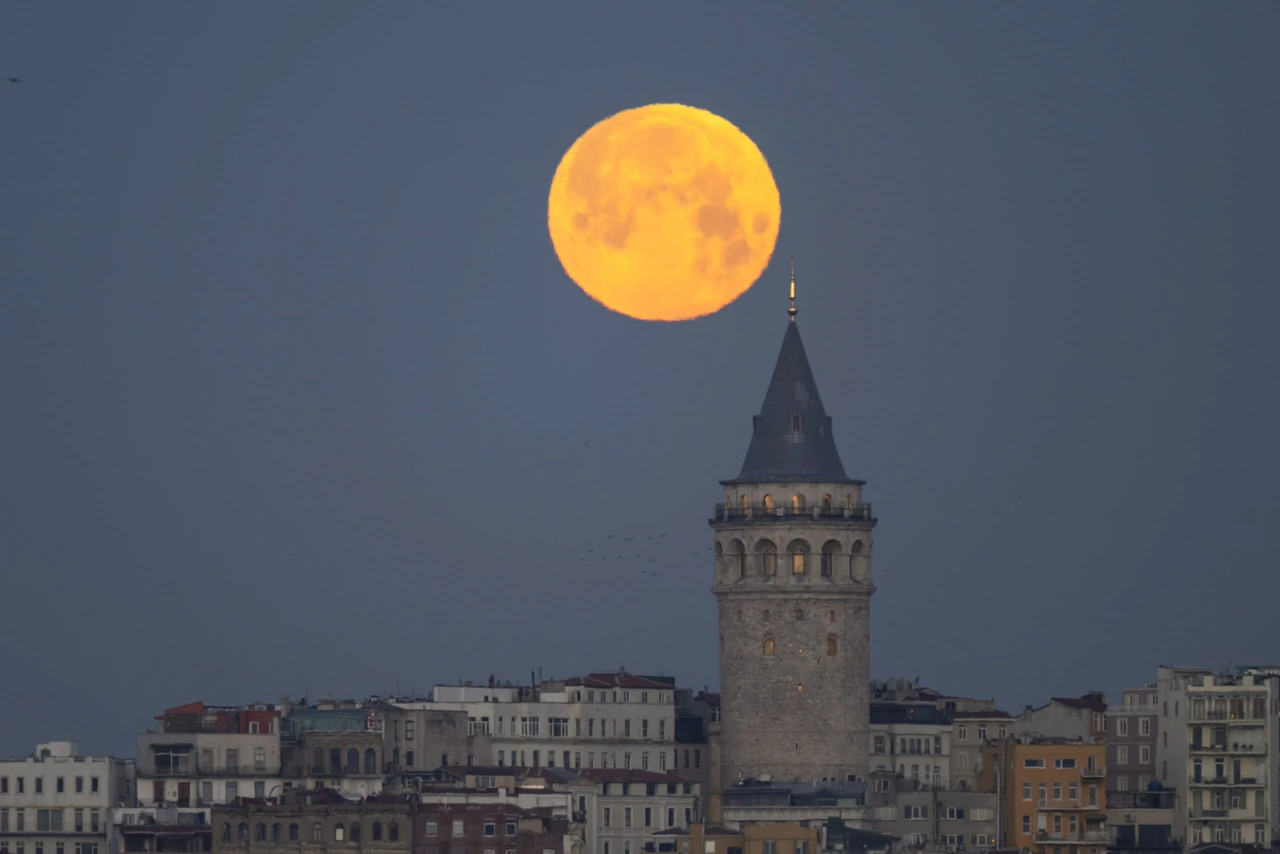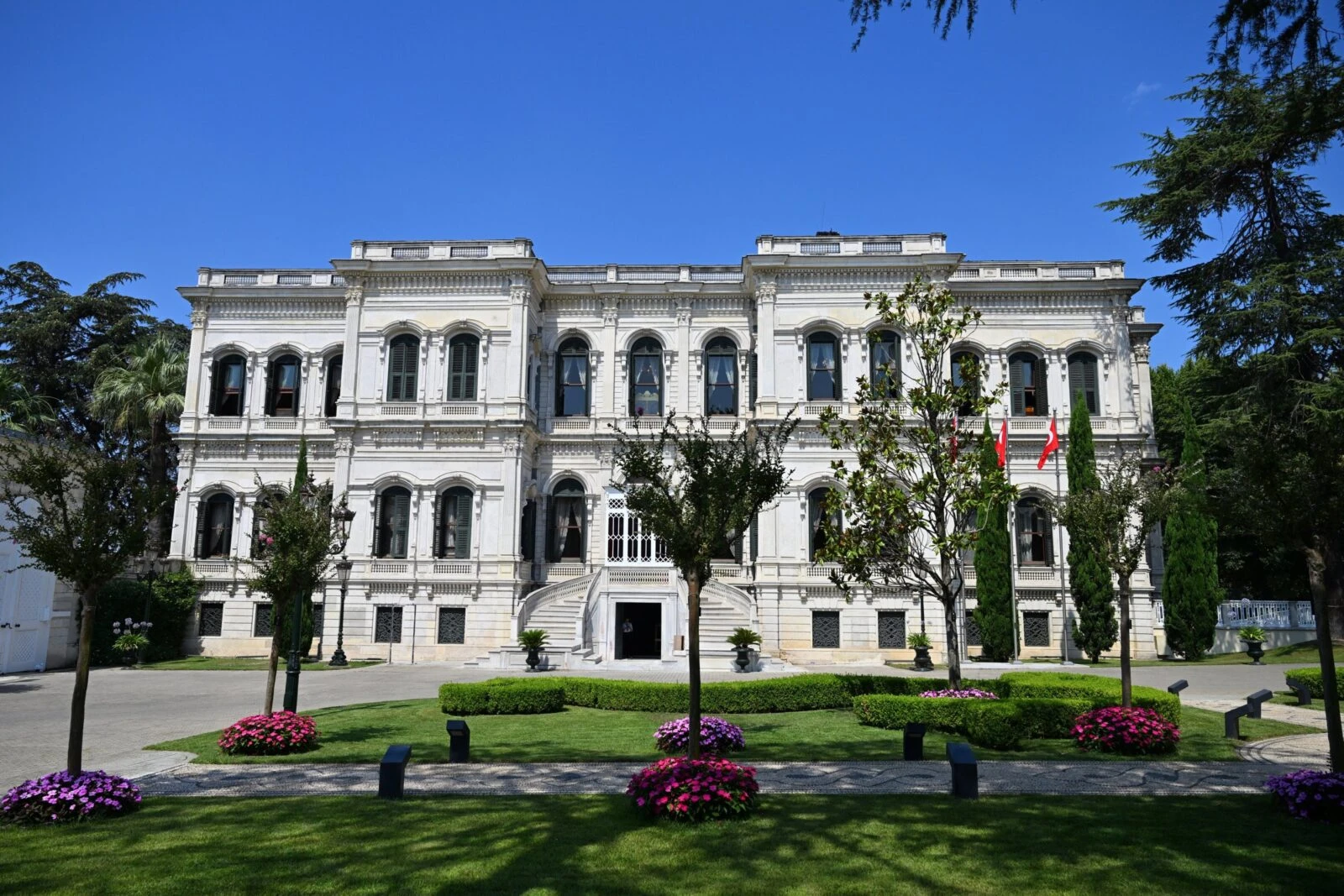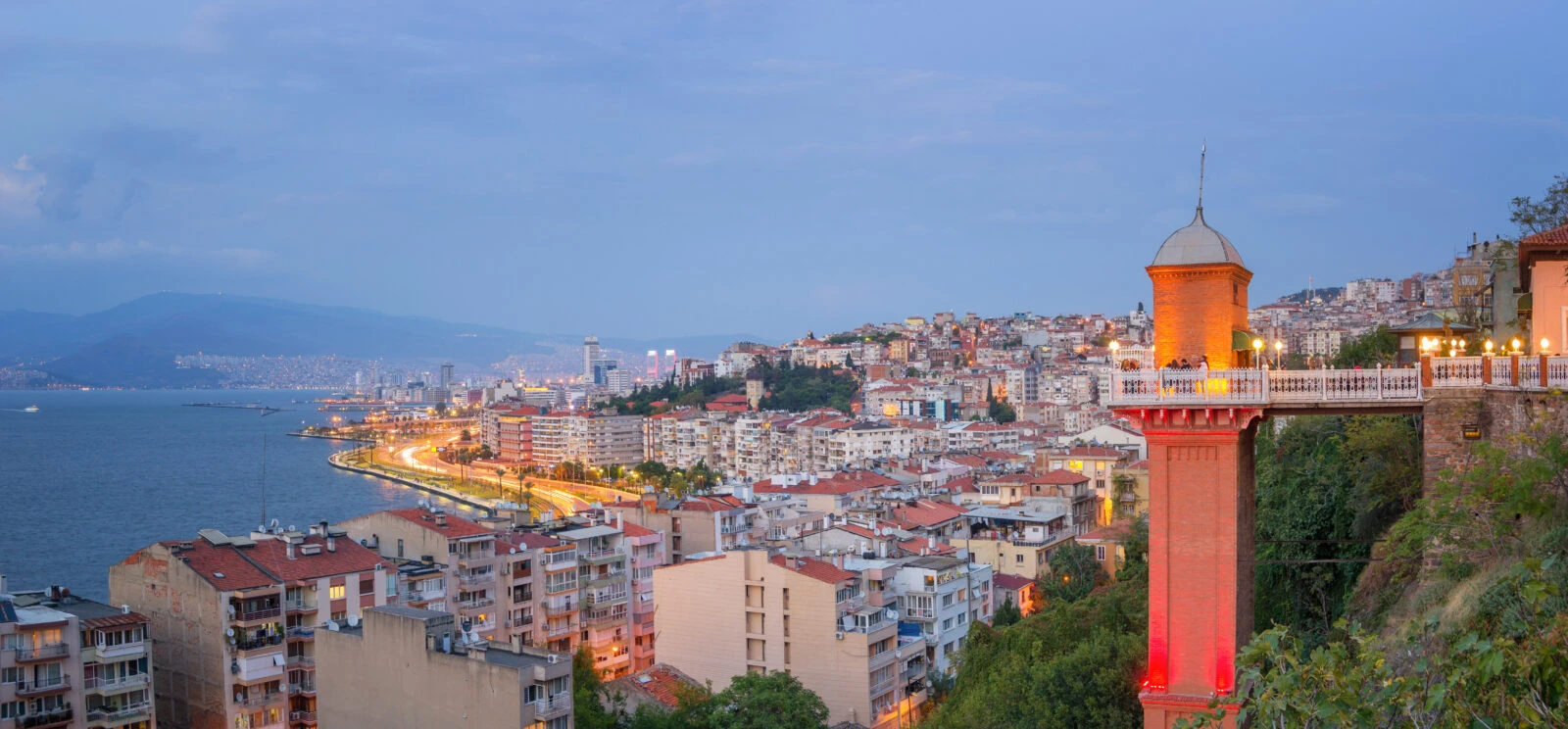Home away from home: Türkiye’s Italian legacy and heritage
 Full Moon rises behind the Galata Tower in Istanbul, Turkiye on March 14, 2025. (Isa Terli/AA Photo)
Full Moon rises behind the Galata Tower in Istanbul, Turkiye on March 14, 2025. (Isa Terli/AA Photo)
Everyone knows the Galata Tower, built in Istanbul by the Genoese in the mid-14th century. It stands in testimony to Türkiye’s long-standing relationship with Italy, yet few visitors are aware of just how many Italians have called Istanbul and other parts of the country home over the years or of the wonderful treasures they’ve left behind.
Italian writers, architects, and painters of Ottoman Empire
Raimondo D’Aronco (Aug. 31, 1957 – March 3, 1932) was the first ever foreign-born palace architect. Originally from Gemona del Friuli, D’Aronco arrived in Constantinople in 1893, having been invited by Abdulhamid II to design an exhibition marking the sultan’s 20 years of rule.
A devastating earthquake put an end to that, but D’Aronco stayed on.
Over 15 years in Istanbul, D’Aronco helped remodel Yildiz Palace, built the Dogan Apartment block and Botter House, built for Dutch national Jean Botter, the official tailor and couturier to the sultan.
However, his work truly stands out in the radically Art Nouveau-inspired Seyh Muhammed Zafir Turbe, a tomb for a sheikh.
Born in Morcote, the Italian-speaking part of Switzerland, Gaspare Fossati (Oct. 7, 1809 – Sept. 5, 1883) and his brother Giuseppe studied architecture in Milan. In 1836, Gaspare was named St. Petersburg court architect and sent to Istanbul to build the Russian Embassy.
The Fossati brothers completed more than 50 projects, including private apartments, theaters and the San Pietro Church in Beyoglu. In 1847, Sultan Abdulmecid I commissioned them to restore the Hagia Sophia.
As well as fixing cracks, strengthening supports and uncovering mosaics, they erected a new lodge for the sultan. Gaspare decorated it in a mix of Turkish Rococo and Byzantine styles.

Fausto Zonaro (Sept. 18, 1854 – July 19, 1929) came to Istanbul from Padua in 1891, inspired in part by Edmondo de Amicis’ book “Constantinopoli.”
A meeting with Osman Hamdi Bey, the famous Ottoman painter and intellectual, led to Zonaro being introduced to members of the elite. One of them, a Russian ambassador, presented Sultan Abdulhamid II with Zonaro’s work, “The Ertugrul Cavalry Crossing the Galata Bridge.”
It impressed the sultan so much that he appointed Zonaro as court painter.
Zonaro’s works, featuring everyday scenes like members of the harem boating on the Bosphorus and simit sellers on Galata Bridge, show he was a keen observer of daily life. His wife, Elisabetta, was also a talented artist, using a camera rather than a brush.
Türkiye in transition: From Ottoman Empire to Turkish Republic
Work brought architect and engineer Edoardo de Nari (16 February 1874 – 16 August 1954) to Istanbul in 1895, and love kept him here until his death. He initially worked with Giulio Mongeri, experimenting with eclecticism, Art Deco and First National Architecture, before embracing Modernism.
De Nari collaborated closely with skilled artisans, and their wood and metal work was integral to his designs.
His private clients were mainly the Ottoman bourgeoisie, the Pera circle, for whom he designed domestic residences like the Elmadag Surp Agop Apartments. He also assisted in the renovation of the Santa Maria Draperis Church and the construction of Saint Antonio.
Italian painters, sculptors, architects and singers of the Turkish Republic
Vittorio Pisani (Oct. 13, 1899 – April 21, 1974) was born on Corfu to a Greek mother and an Italian father. In 1906, his father, a painter, was appointed to the School of Fine Arts in the famously cosmopolitan city of Smyrna, now Izmir. Then came May 15, 1919, when Greek forces invaded.
Aged just 20, Pisani witnessed the chaos and terror of the ensuing days and later vividly captured them on canvas. His work is on display in the Ataturk Museum in Sisli, Istanbul. When their own house was ransacked, the family fled to Rome with just the clothes on their backs.

The iconic statue of Mustafa Kemal Ataturk, founder of the modern Turkish Republic, in Taksim Square, Istanbul, is a meeting place and piece of Turkish history, symbolizing Ataturk’s dual roles of military commander-in-chief and statesman. It was completed in 1928 by Pietro Canonica (March 1, 1869 – June 8, 1959), born in Moncalieri, northern Italy.
Canonica gained renown for his large-scale monumental sculptures in Russia before being invited to create similar works in the newly formed Turkish Republic. In 1927, he completed the statue of Ataturk on horseback outside Ankara’s Ethnography Museum, the Ataturk Monument in Izmir’s Cumhuriyet Square in 1932, and other smaller pieces.
Architect Guilio Mongeri (Aug. 1, 1873 – Nov. 30, 1951) was a forerunner of the Turkish First National Architectural Movement, which combined neoclassical features with Seljuk and Ottoman motifs.
Born into an Istanbul Levantine family of Italian-British descent, he designed the popular Gothic-style Saint Antuan Catholic Church built in 1906, but his genius is best seen in the Bulgur Palace and the Bozlu Art Project buildings.
Bulgur Palace is named for Mehmet Habib Bey, who made his fortune selling bulgur (cracked wheat). Inside this forward-looking structure from 1912, elegant mirror image stairs lead up to a large, imposing tower that offers sweeping views of the city. The Bozlu Art Project building also has a large domed tower and gorgeous, vibrant blue tile panels above the windows.
David Arugete (April 3, 1921 – Dec. 1, 1968) was born into a large, poor Jewish family in Izmir.
His early years were spent juggling study and work, with the aim of becoming a legal clerk. Then he started singing at bar mitzvahs under the name of Dario Moreno, eventually becoming hugely successful.

He’s best known for his rendition of the song “Ya Mustafa,” recorded in 1962. Even now, fans pay him homage in Izmir’s “Dario Moreno Sokagi,” originally named “Asansor Sokak” after the “Izmir Tarihi Asansor,” a historic elevator that still offers panoramic views of the Bay of Izmir.



